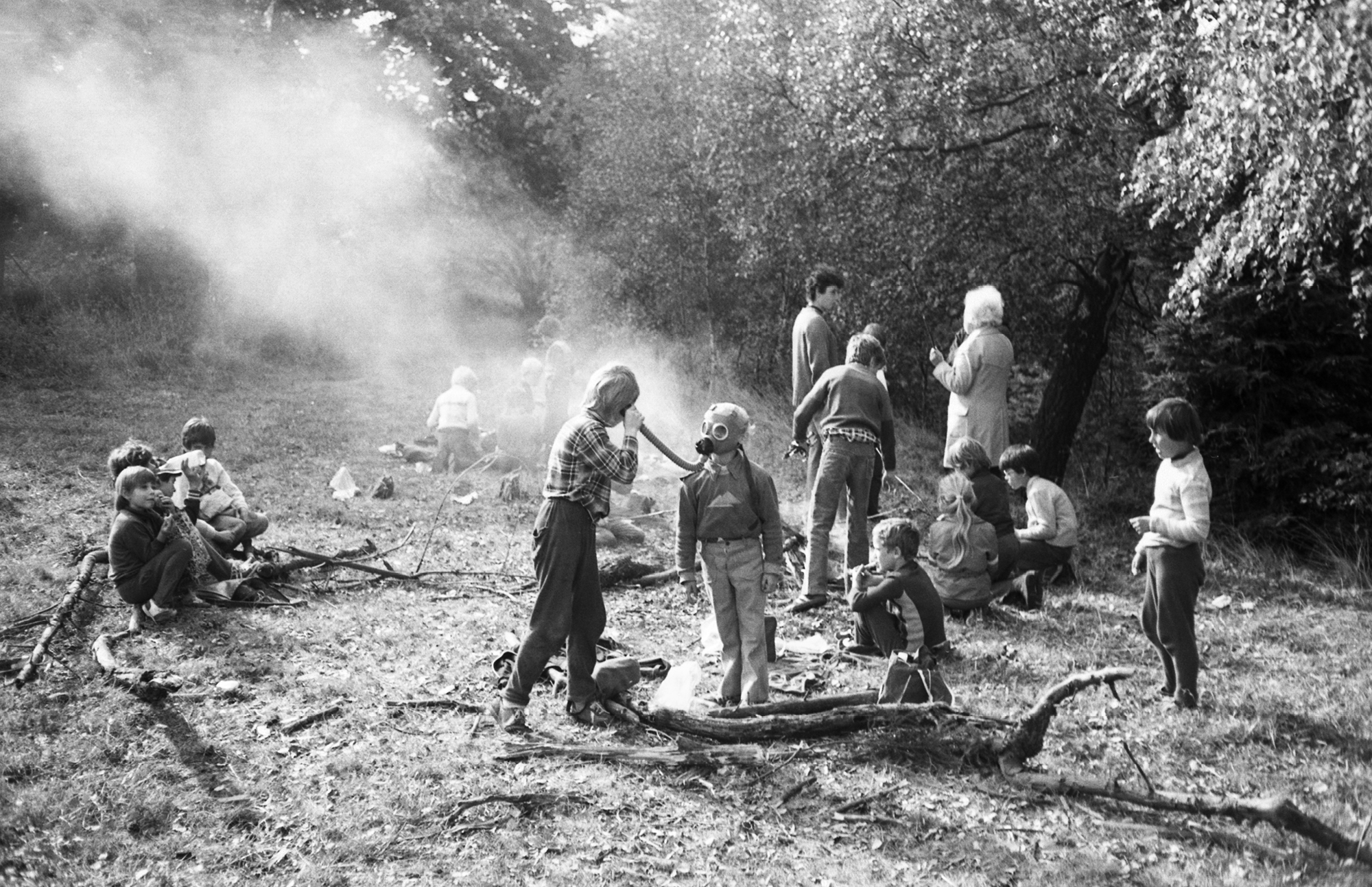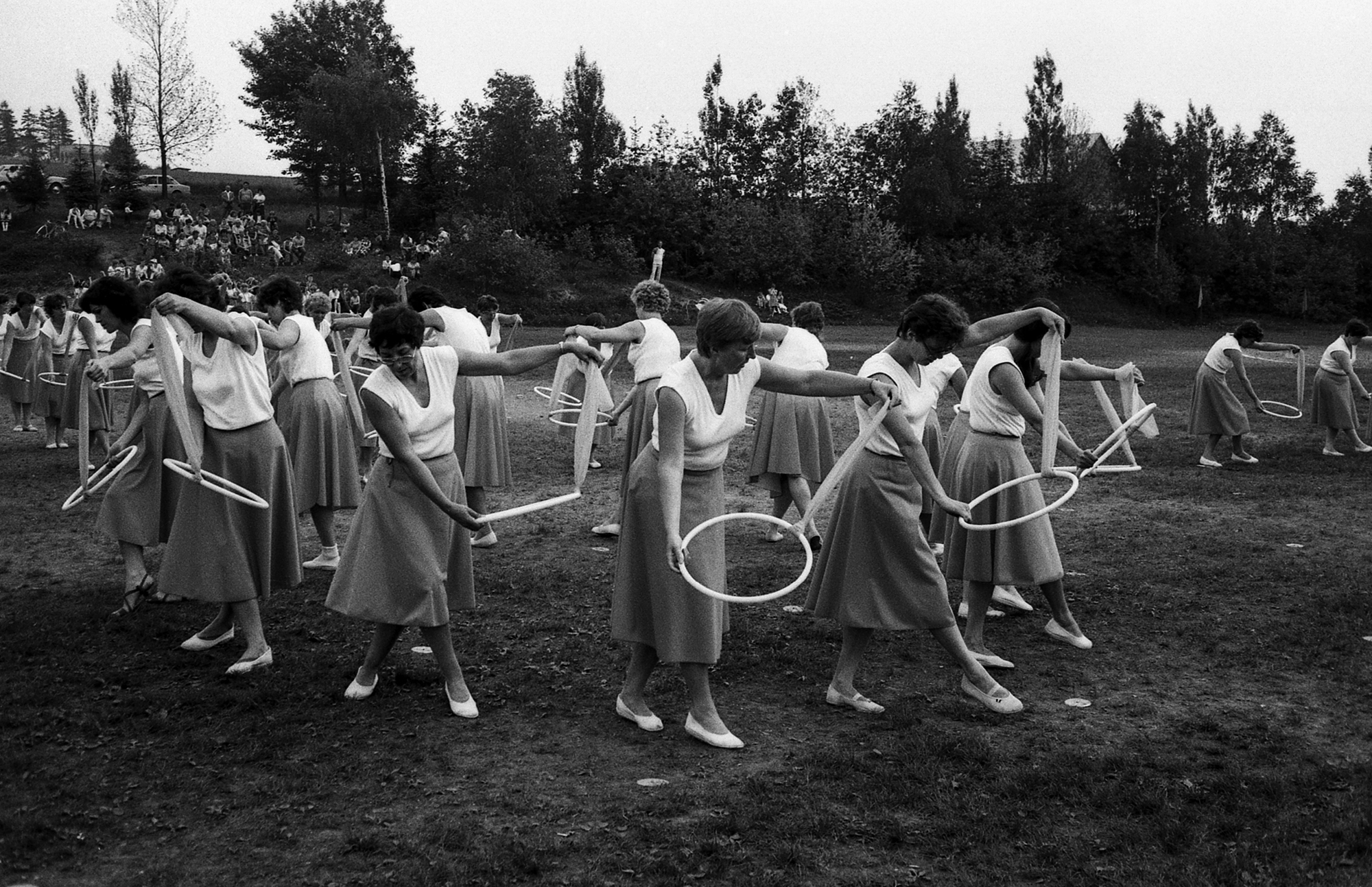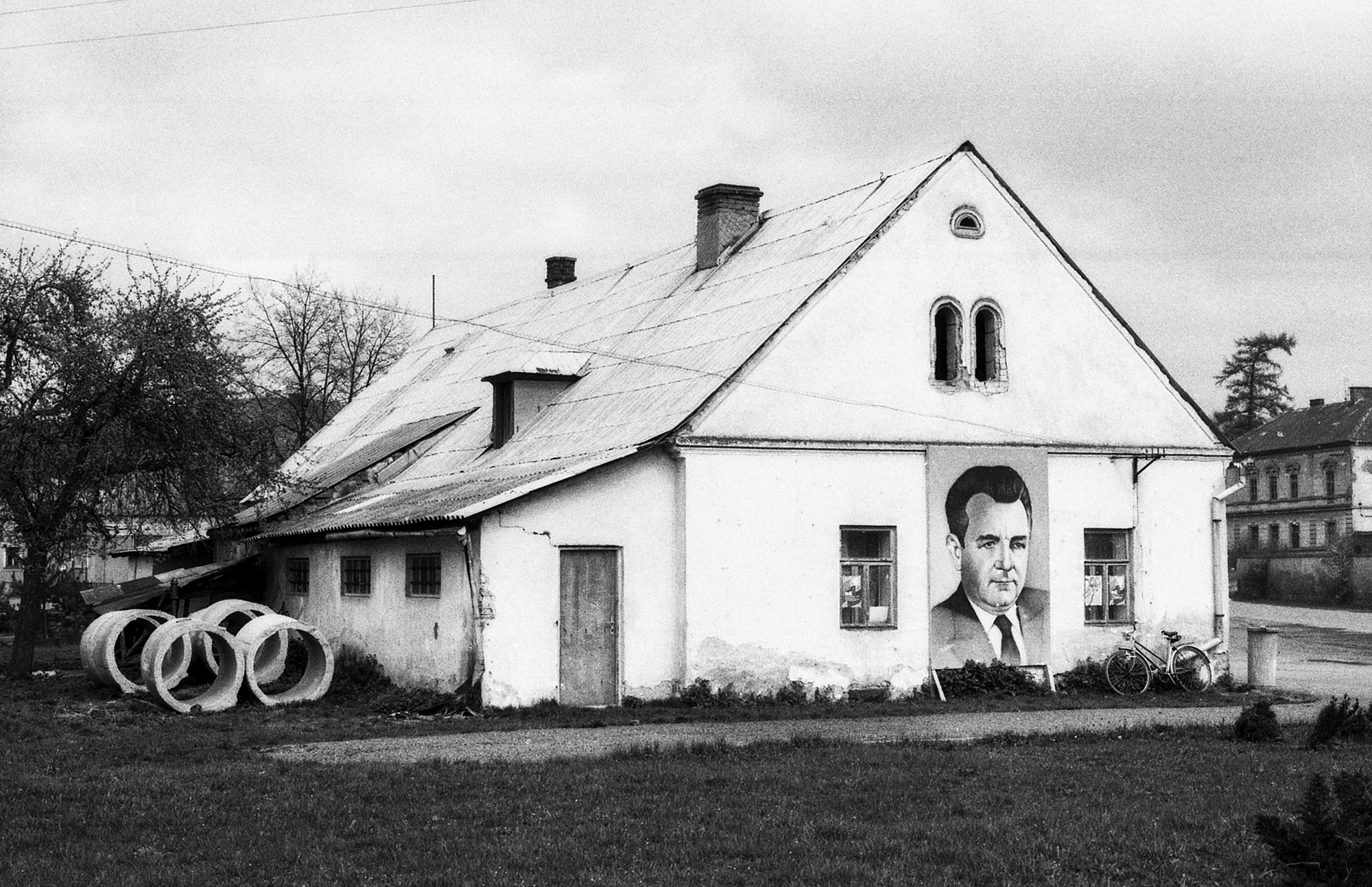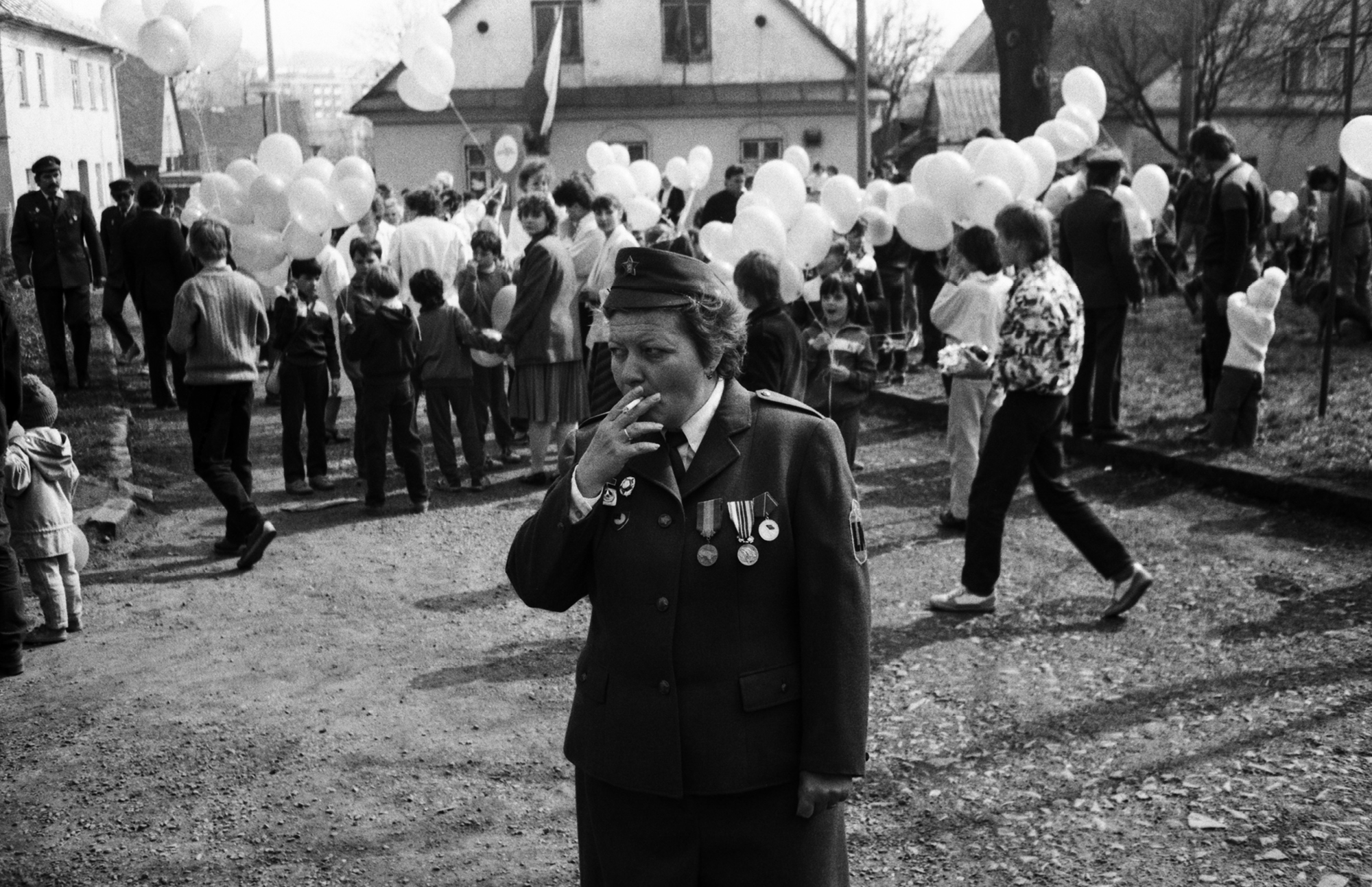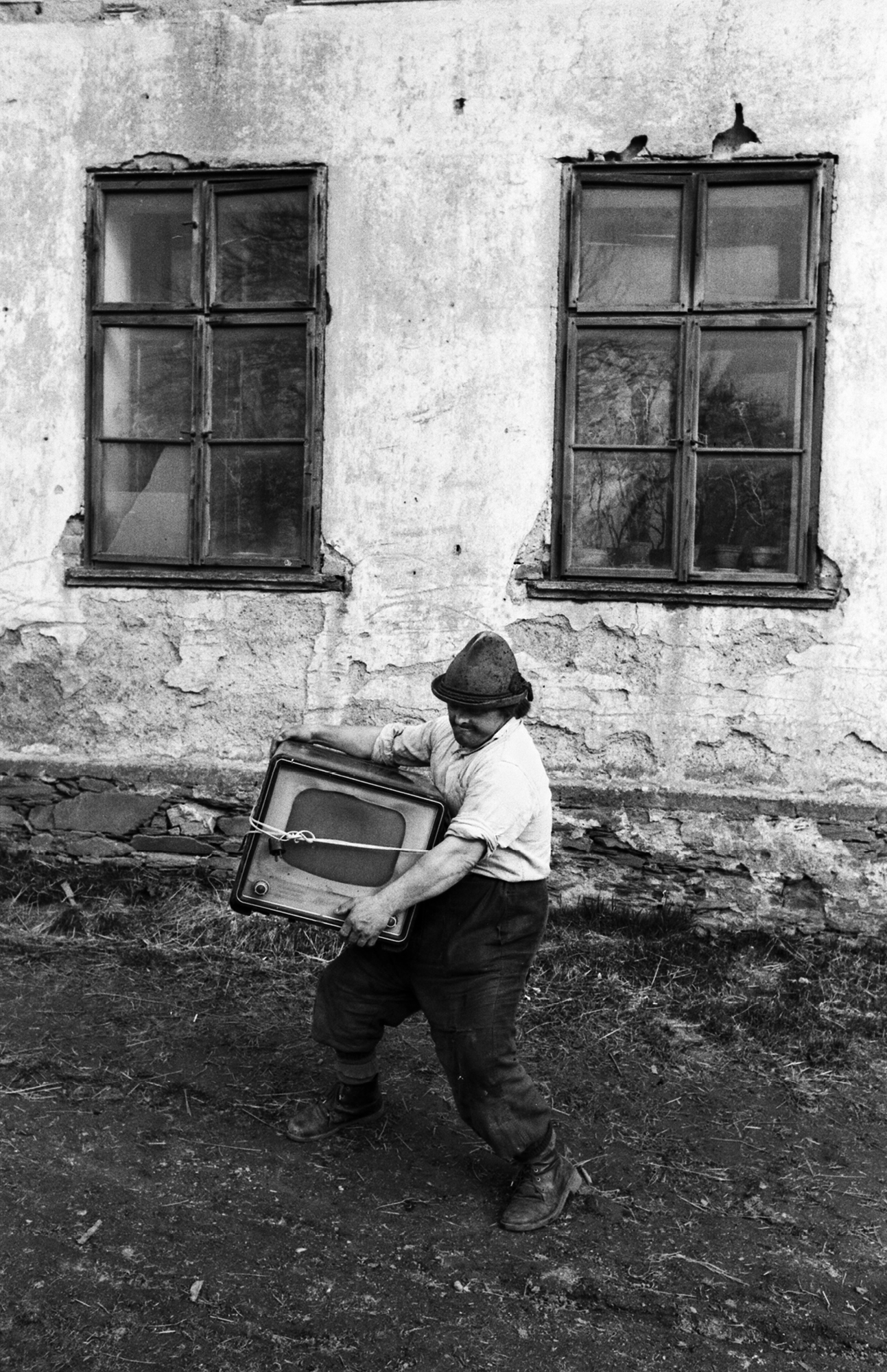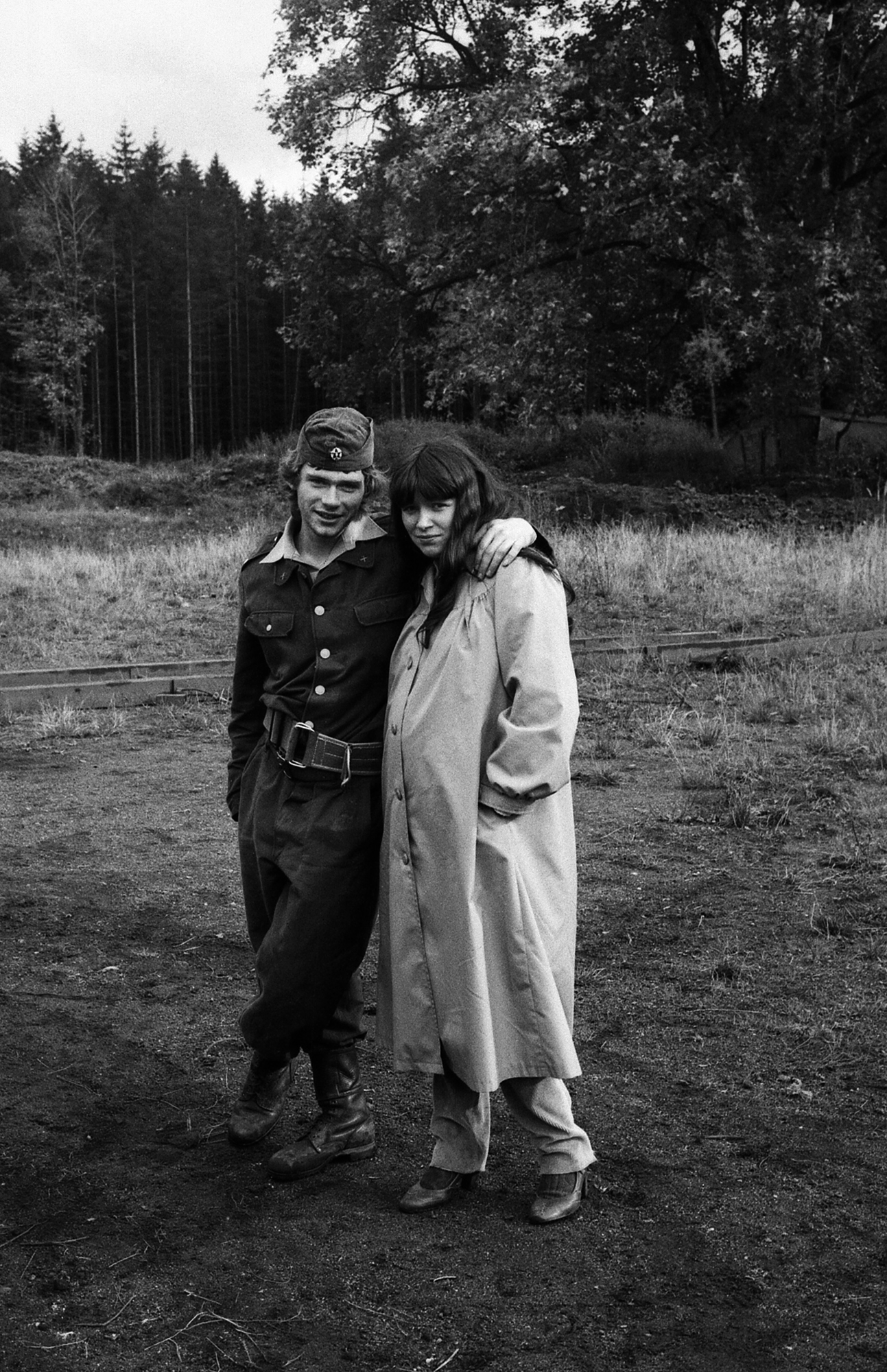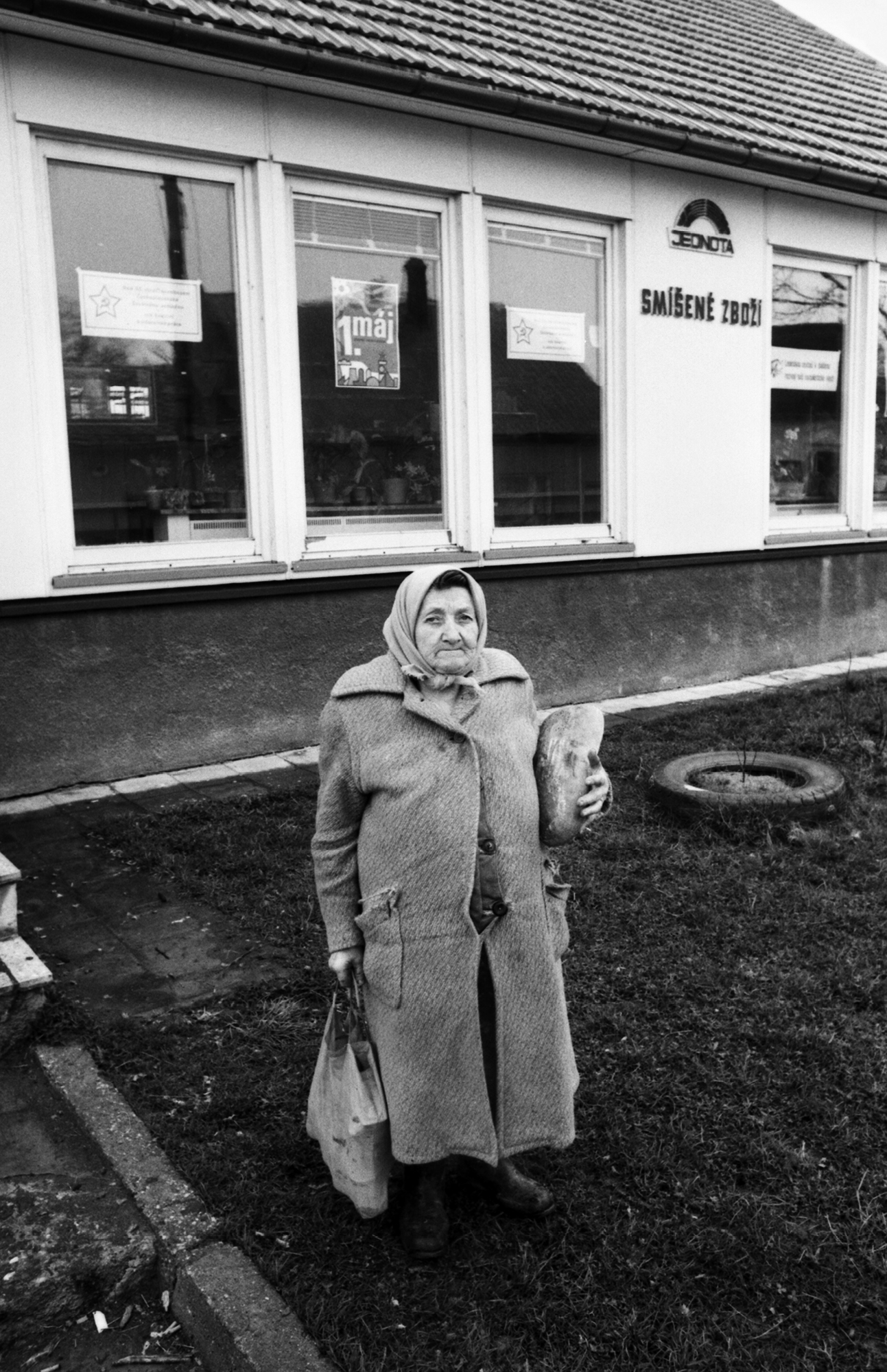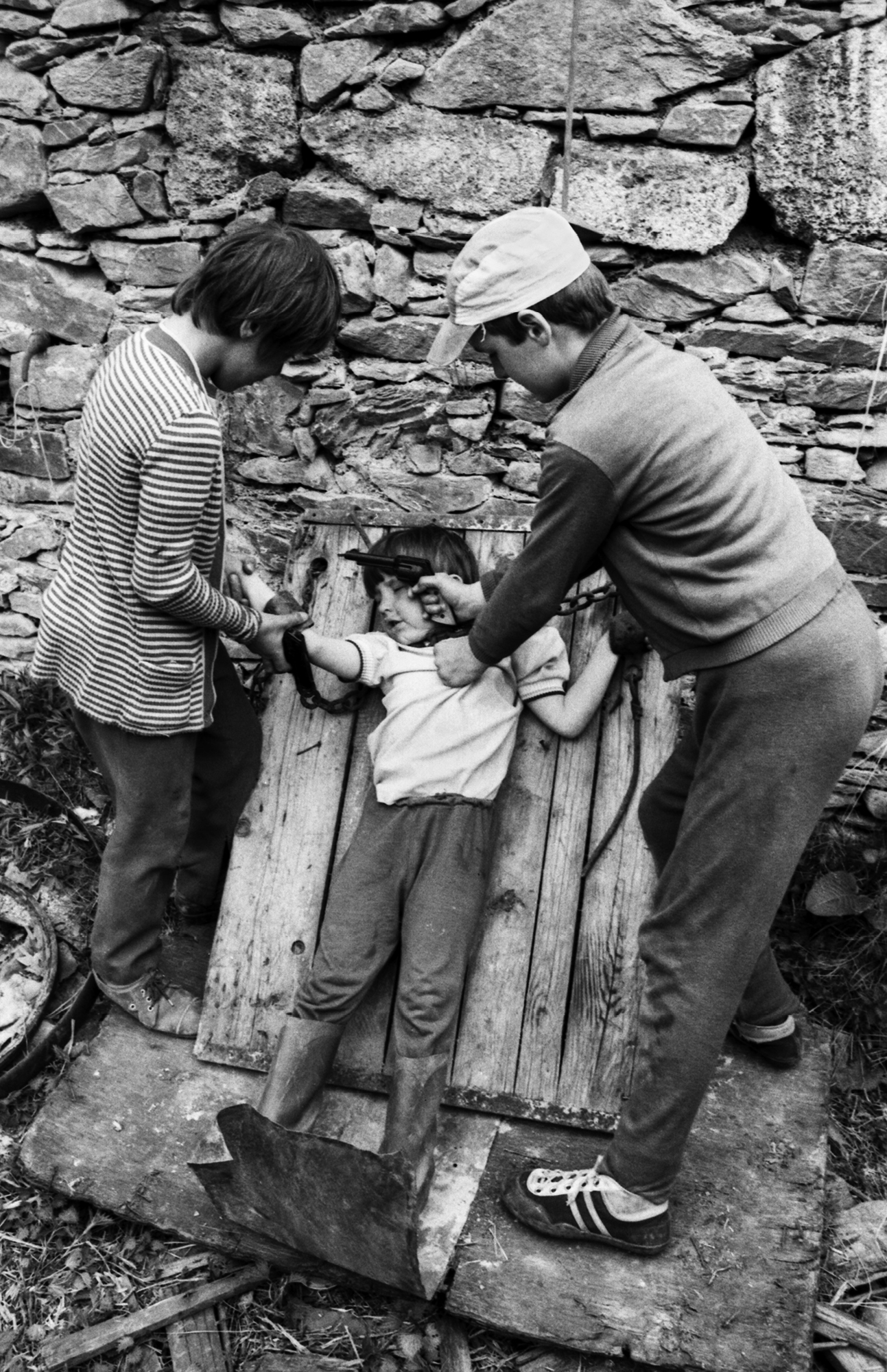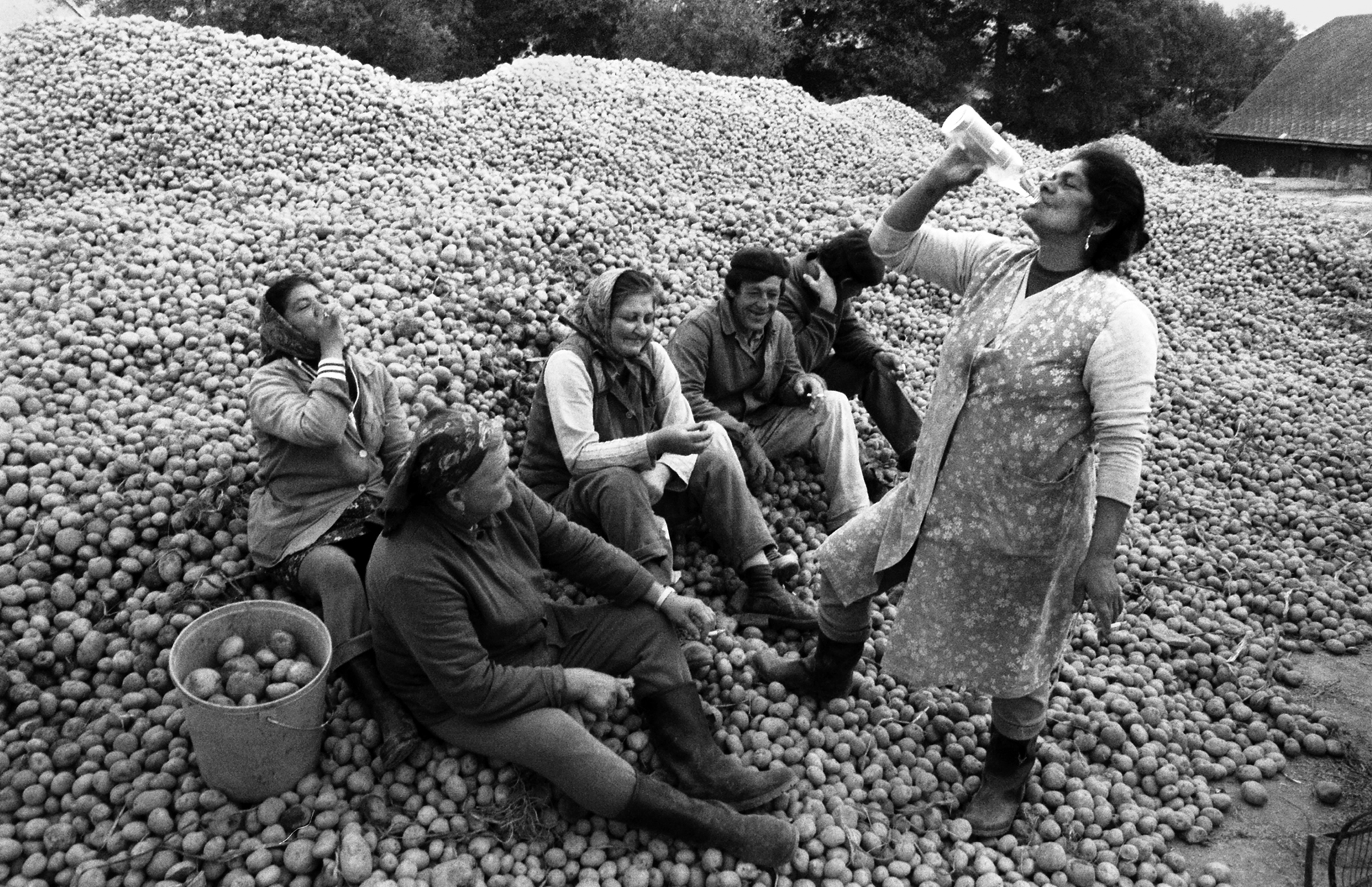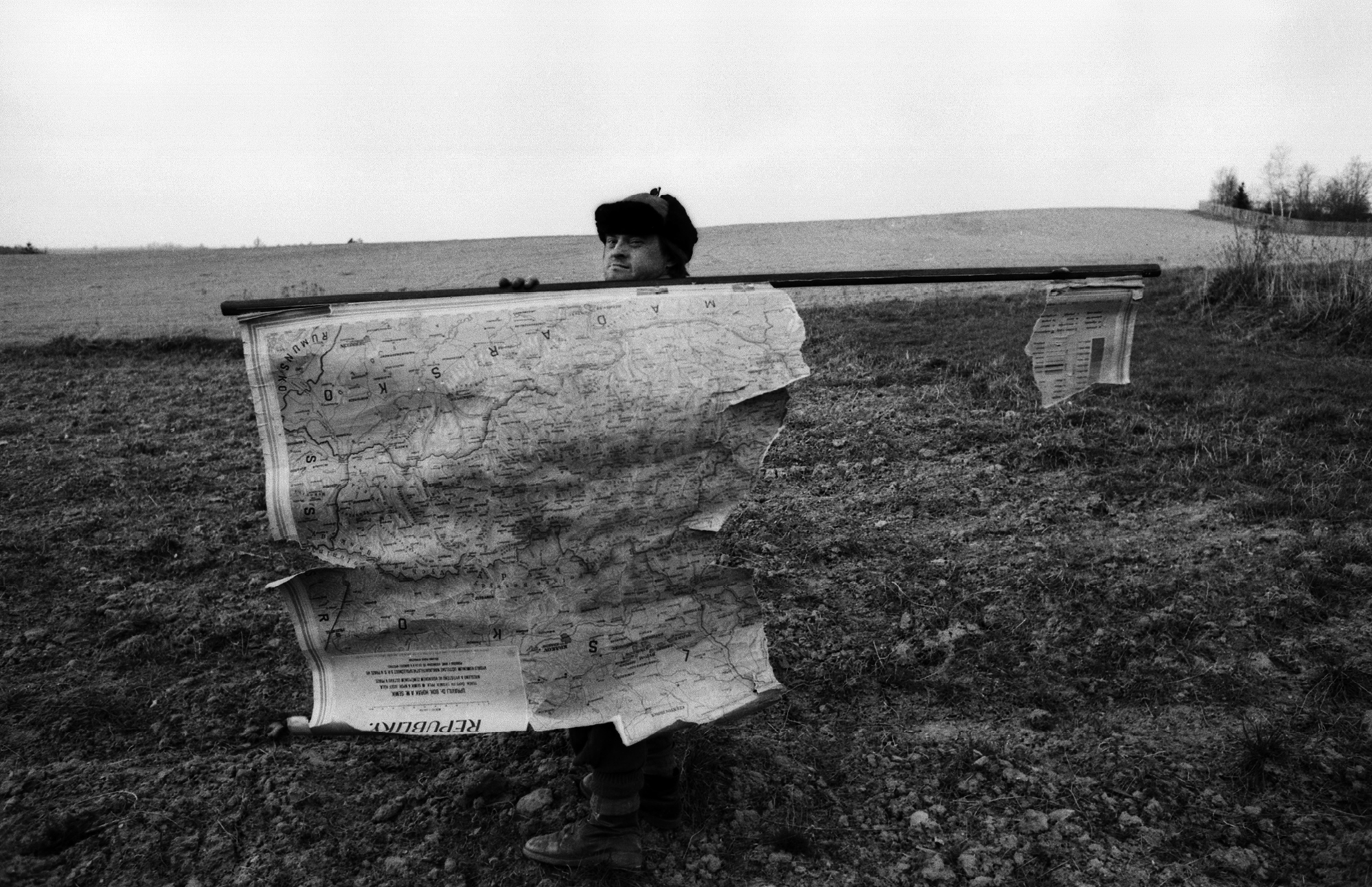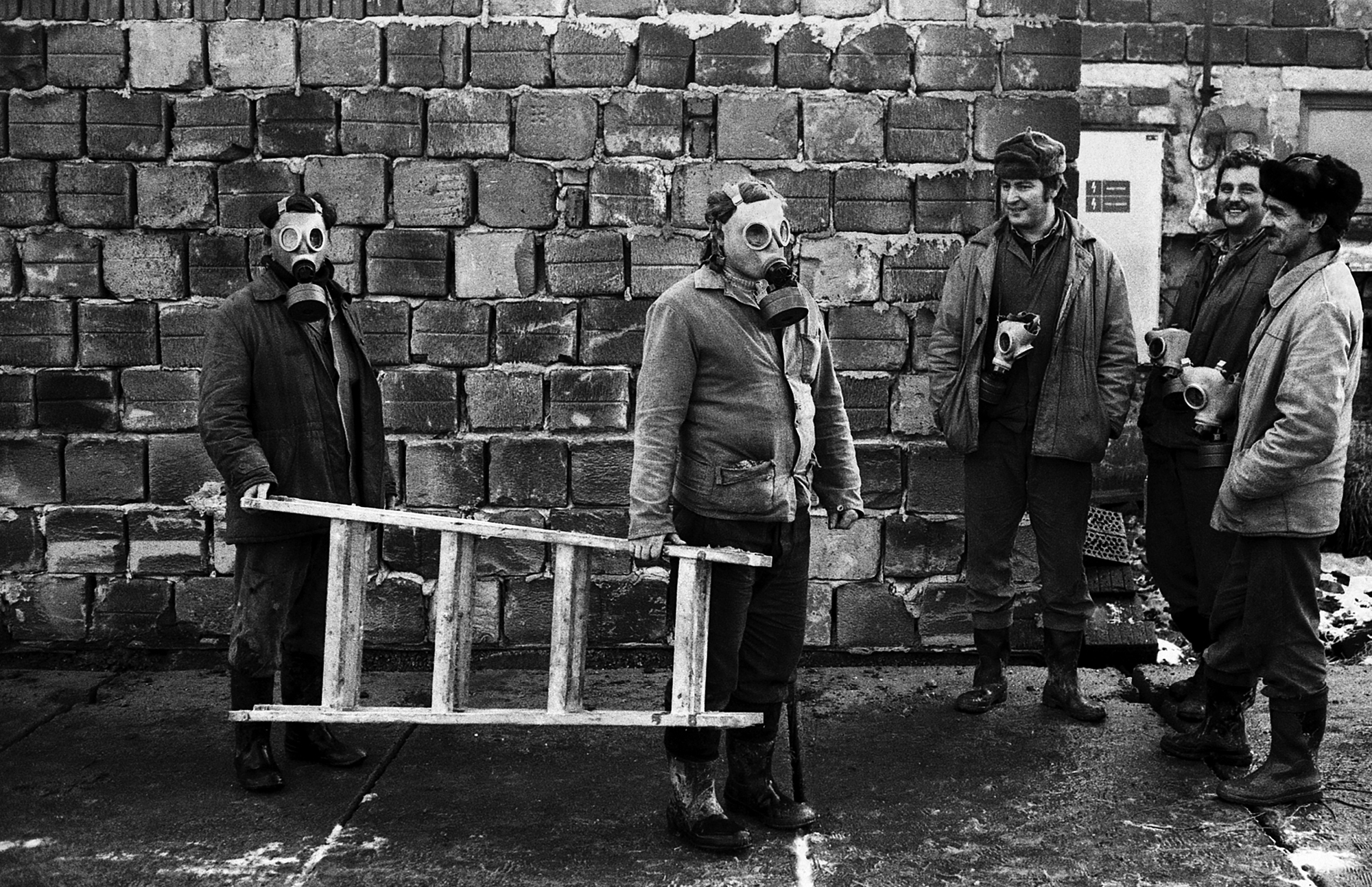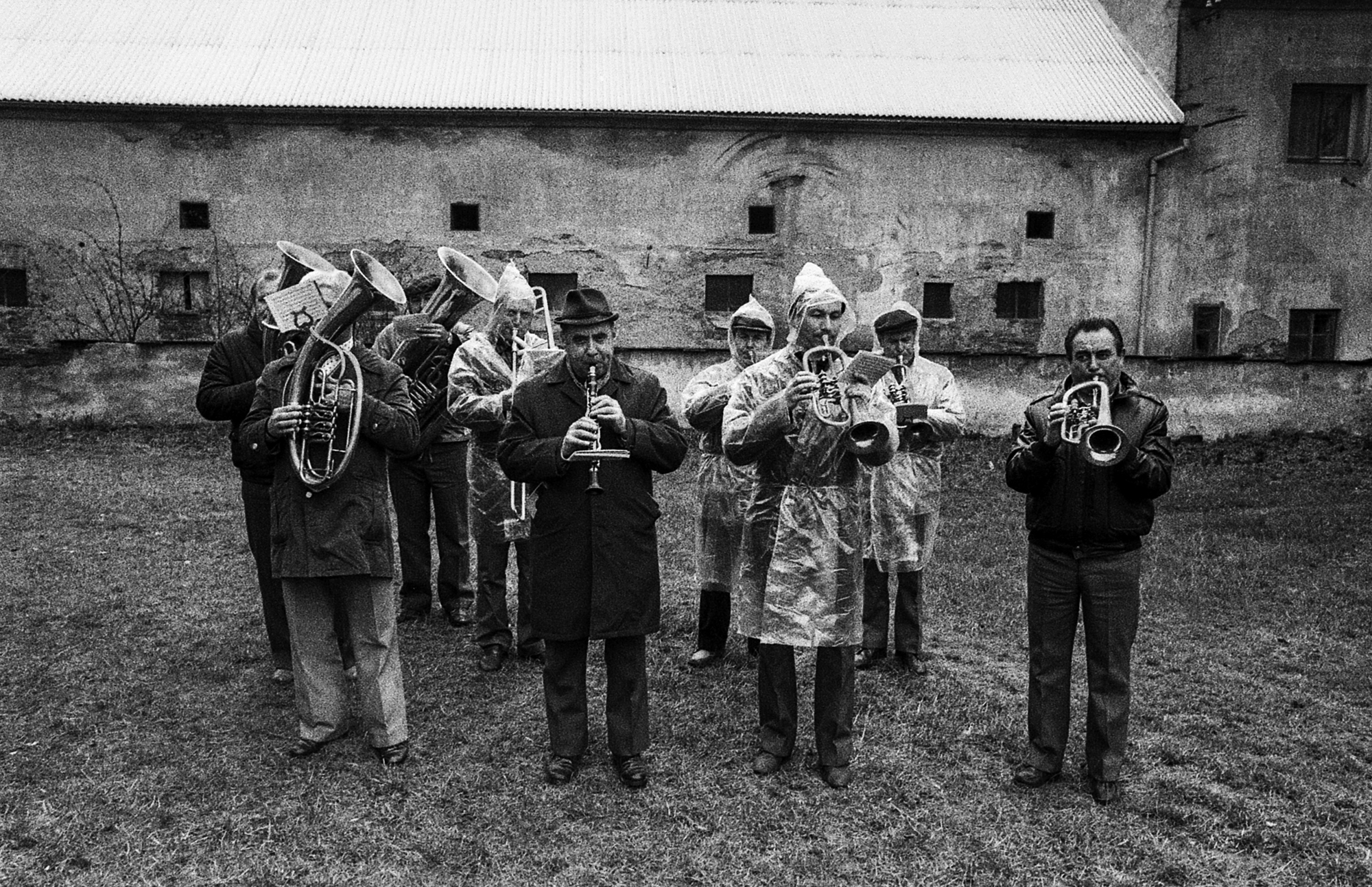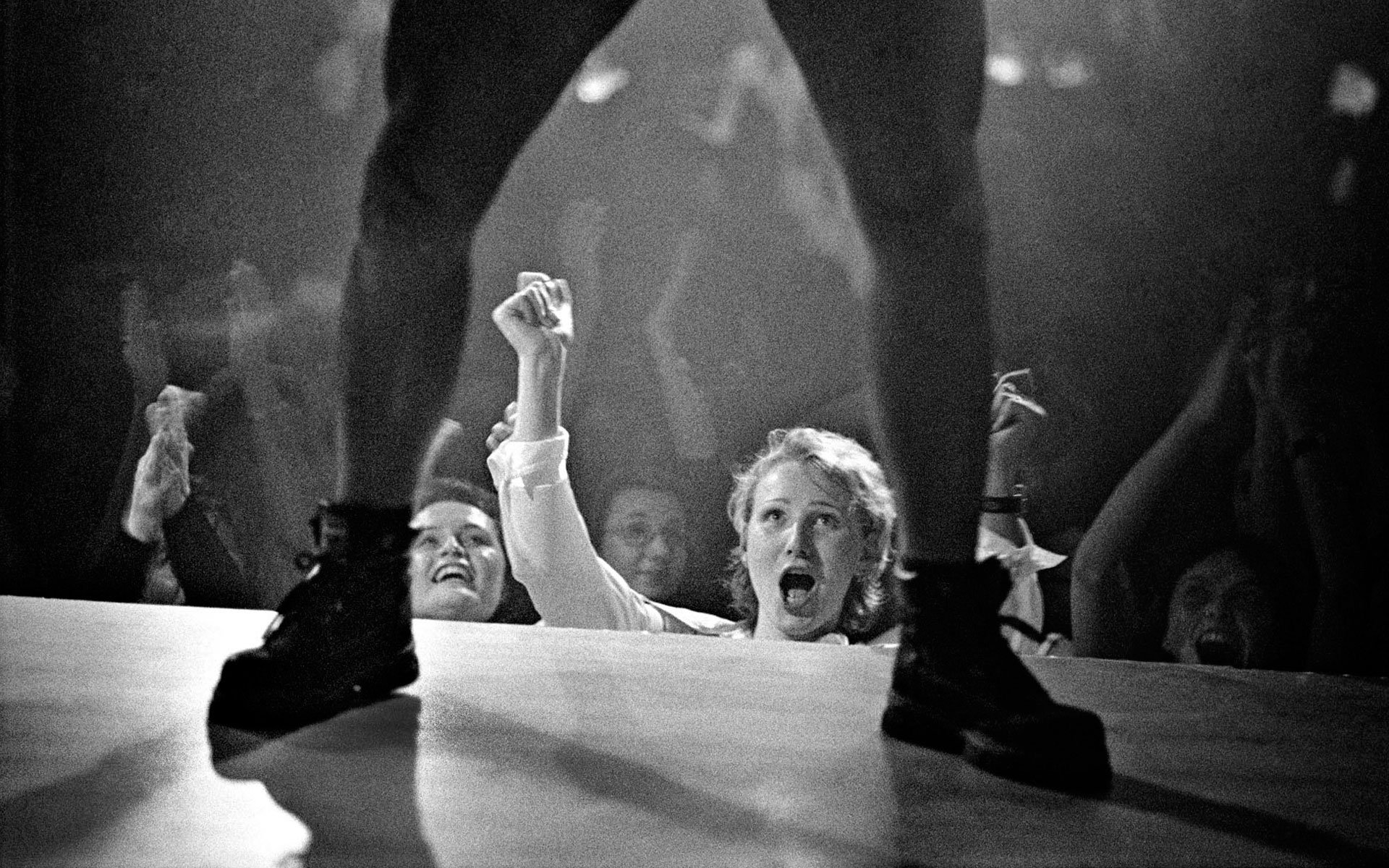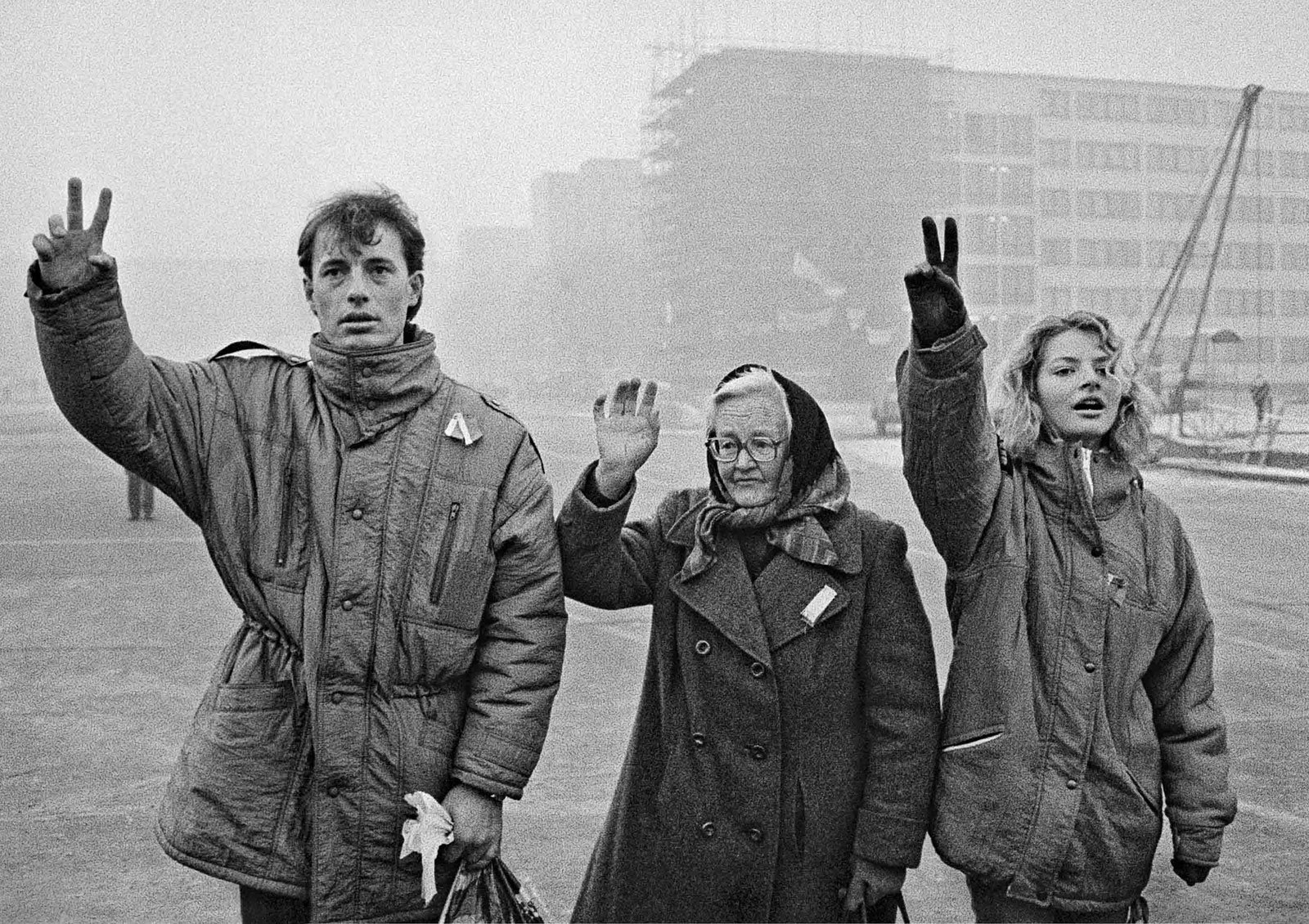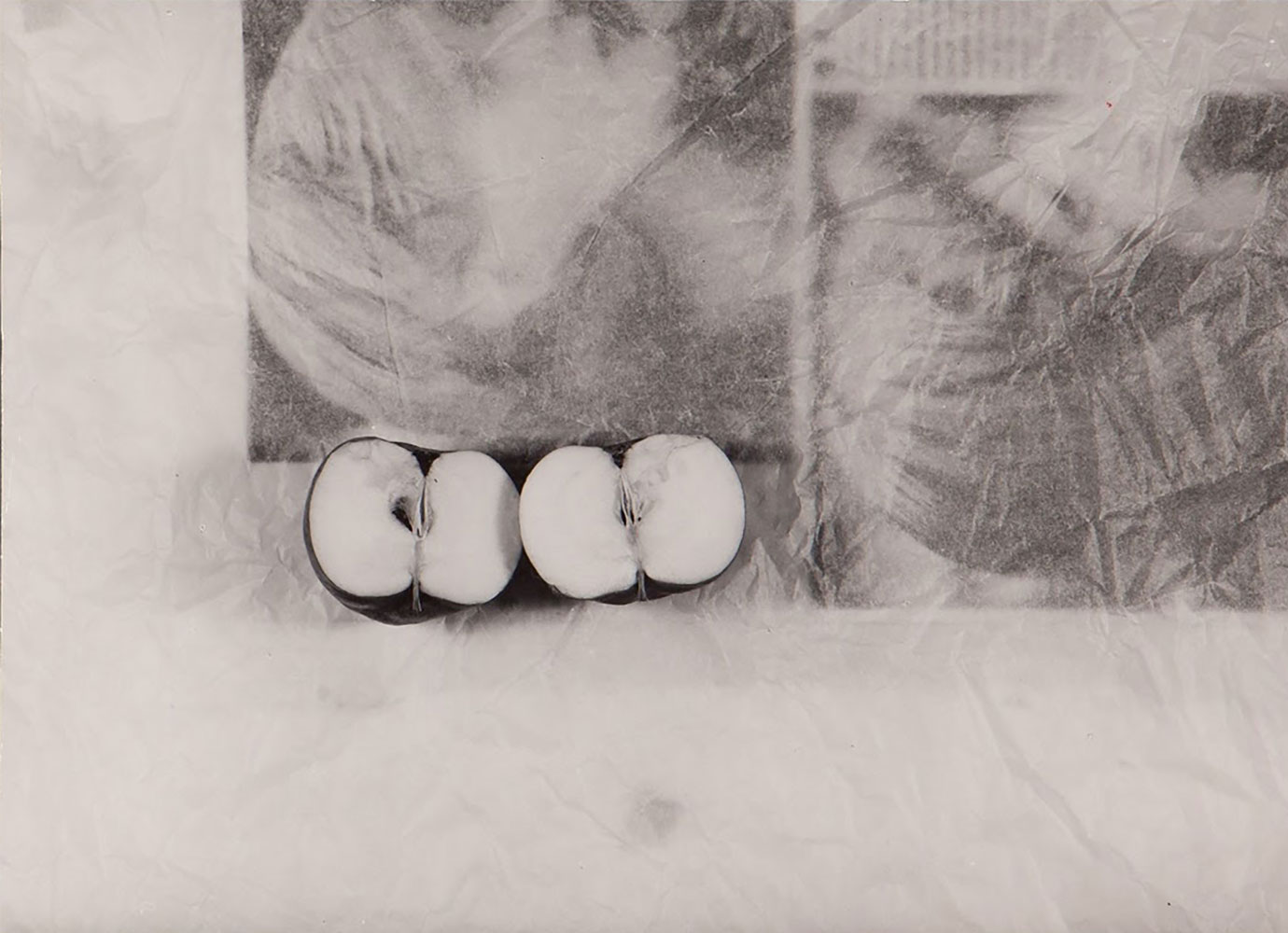Czechoslovak photographer Jindřich Štreit found joy in spontaneity. The regime read his offbeat images as criticism
After being jailed by communists for taking offbeat photos of rural Czechoslovakia, Jindřich Štreit says that the first thing he did on his release was to grab his camera. Now, heralded as one of the greats in Czech photography, his new book Village People 1965-1990, reveals the moments of frivolity that were confiscated by the regime.
About halfway into Jindřich Štreit’s new book, Village People 1965-1990, there’s a photograph of a magician holding a rabbit aloft by its ears. The older man is decked out in a top hat and bow tie, and is smiling direct at the camera. Štreit has opted not to put him centre stage, widening his frame to take in a woman to the left. She’s laughing uproariously and pointing at the rabbit, her other hand wielding a battered badminton racket. Above her head is a washing line, wooden pegs dangling from the string. The magician is standing outside in an ordinary yard in front of some rabbit hutches and a shed.
Komárov (1983)
This one shot encapsulates the warmth and spontaneity of Štreit’s work. Throughout the 1970s and 80s, Streit dedicated himself to documenting village life in the Bruntal region of then-Czechoslovakia while working as a local headmaster. In this image, as in so many others, Štreit isn’t quite looking where he’s meant to. Instead of focusing on the magic trick, he highlights the relationship between the two figures who are clearly having fun and are relaxed in front of the photographer. Štreit knew many of his subjects, and brought their personalities to life, capturing their zest and wit while sharing the magic of the everyday.
The caption at the back of the Village People book doesn’t give much away, simply stating that this photograph was shot in Komarov in 1983. But if you know a bit of Štreit’s history, or read the book’s fascinating essay (written by Vladimir Birgus, a photographer, curator, photography historian and head of the Institute of Creative Photography at the Silesian University, Opava) you’ll realise this date is significant, because it’s right after Štreit was released from jail. His propensity for looking askew makes his photographs, but along with his activities organising events and exhibitions in Sovinec, it also meant he fell foul of the communist regime.
Born in 1946 in South Moravia, Štreit grew up in the village of Stritez nad Becvou in East Moravia, and in Techanov, a small village in the Bruntal district near the Polish border. He got into photography as a child but studied education, taking up his first teaching job in 1966 and working in two local settlements, Sovinec and Jirikov. But he also kept up his photography, and, by summer 1982, was taking part in an unauthorised exhibition in Prague called Setkani (Encounter). The exhibition was shut down before it opened and his images were confiscated; on 12 June he was arrested at home, in front of his family.
Streit’s negatives, camera, and darkroom were seized and he was held in Ruzyne Prison in Prague for four months, where he was regularly interrogated. Accused of “defamation of the republic and the president”, he was then given a suspended sentence of two years. His archive was held by the secret police, and he was banned from teaching. It sounds crushing, but somehow Štreit didn’t find it so. In fact, after all these experiences, he went straight back to shooting.
“After I was released from prison, I went out to take photographs immediately, on the next day,” he tells me. “If I hadn’t done it, I might not have had the courage to start again. I also wanted to let others know that I was free and continued to be a part of their lives, and that I was fine. There were various horrifying rumours going on about me at the time.”
Perhaps surprisingly, he didn’t consider leaving Czechoslovakia. “I’ve never intended to do so,” he says. “If I did, I would admit any notional guilt. I’ve always felt innocent, whether in prison or after I returned. The feeling helped me survive.”
Instead he got a new job at a state agricultural cooperative and quietly carried on, organising exhibitions in Sovinec, where he lives today, and photographing the villages, only stopping in 1990 after the Velvet Revolution had ended the era and swept Czechoslovakia clean off the map. A few years later, he finally got his confiscated archive back, and many of these images are included in Village People. Looking at this work, it’s easy to see both why he felt innocent, and why the regime thought otherwise.
Břidličná (1983)
On the one hand, his images simply show daily life; an older woman holding a loaf of bread in Jirikov in 1981, kids playing together outside in Dvorce in 1980. On the other hand, there’s that keen sense of humour, and his unsentimental, ultra-observant eye. The older woman is poorly dressed, for example, her misshapen coat fraying at the edges though she stands in front of a poster pushing 1 May [International Workers’ Day]; the children are playing with guns, their games harsh demonstrations of power and its abuse. The Communist regime felt Štreit’s work was generally subversive, the court judgement stating it depicted “some negative facts that persist in our villages”. More than that, it ruled he was systematically mocking the state.
As Birgus writes, the 10-page court decision picks out shots that “allegedly ridicule President Gustav Husak by showing his portrait on a flaking wall in a room where some men are drinking alcohol or in a room where a man and a woman are putting on gas masks, which the court said was a commentary on the militarisation of the authorities”. It also finds instances in which the Czechoslovak flag is shown inappropriately, in insufficiently glorious circumstances.
treit says it was “not my intention to show the regime in negative light. I rather aimed to provide a realistic, subjective view of the times,” he continues. “The view was rather absurd and humorous than destructive. I did not really expect I would get arrested.” And while absurdism can be subversive and anti-authoritarian, it was definitely understood as such in Prague’s theatres in the 1960s. As Štreit points out: “life is full of absurd situations”. By reading such images as criticism, the Czechoslovak regime revealed its sheer ambition for its power.
Jiříkov (1982)
Štreit continued to resist that power. While he avoided what Birgus describes as “the excessive straightforwardness and superficial showiness of the earlier photos with their contemporary political themes”, after leaving prison, he kept shooting other apparently inappropriate subjects. Village People 1965-1990 includes a surreal shot from Arnoltice in 1985 showing people in gas masks carrying a ladder; it also features a photograph from Bridlicna in 1983, showing a man in uniform drinking beer [or what looks very much like it], and his men looking on and laughing.
In fact, there’s generally no shortage of alcohol or cigarettes. Another image from Arnoltice in 1985 shows a woman drinking straight from [what looks like] a vodka bottle, a cigarette dangling from her free hand. She’s clearly been working, though, and she and her companions are pictured on an epic mountain of potatoes; if they’ve harvested all those spuds, it’s hard to hold it against her. Štreit’s warmth, the depth of his human fellow-feeling, comes across in every image. In fact, he tells Birgus, liking people is the most important part of taking a photograph. “After that, everything is terribly simple.”
For Štreit, life took a number of unexpected — maybe absurd — directions after the Velvet Revolution. His criminal record was wiped clean and he started teaching again, this time to university students; numerous books of his work started to be published, establishing him as one of the greats of Czech photography. He’s now exhibited in hundreds of shows, and his prints are held in collections such as the Moravian Gallery in Brno. More importantly, after 1989, he was free to shoot what he liked where he liked, and he travelled all over the world to take photographs, as well as working back home for himself and for institutions such as the State Opera and the Ministry of Health.
He hasn’t photographed in villages since the 1980s, but says he’s thinking of doing so now, musing that enough time has elapsed to go back, that “thirty years is a good time for the changes to be visible”. But while he hasn’t shot there, he’s continued to live in the area, making his home in this small, rural community. “I feel freer and more unrestrained in the country,” he says. “Even though I still live in a village, I go to a city almost on a daily basis because of my friends, job, interests and culture. Yet, I always return to the stillness of the village every day. I live in beautiful countryside which I like and which makes me happy. I had an opportunity to live in a city: Olomouc or Prague. But I would live in a crowd. I’m a solitaire in the village.”
Village People 1965-1990 by Jindrich Streit is published by Buchkunst Berlin and available here. Many thanks to Štěpánka Bieleszová for translating the interview.
